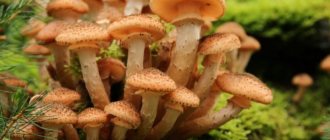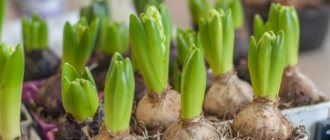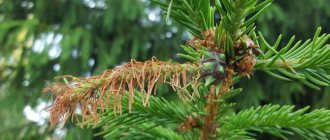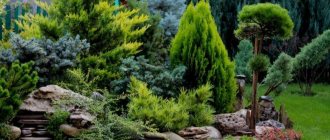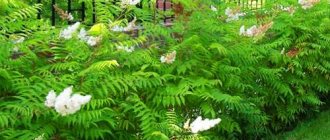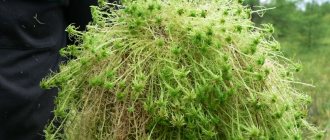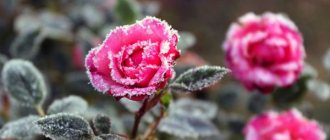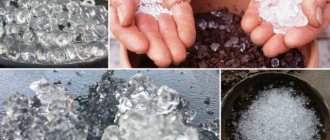When taking a leisurely walk through the garden in summer or early autumn, you will definitely notice a beautiful plant that exudes romanticism and peace. We are talking about spirea. This shrub has long won the love of florists, so in rare cases the garden does without a “resident” called spirea.
This plant belongs to the ornamental deciduous shrubs. In the wild, it is found throughout almost the entire Northern Hemisphere. Regarding domestic spireas, breeders have done a tremendous amount of work to develop amazing varieties of shrubs. The basis for such abundance was natural species. The variety is amazing; everyone can choose a plant to suit their taste. In this article we will talk about the most popular types of spirea, paying special attention to one of the most beautiful shrubs, called Japanese macrophylla spirea (Macrophylla).
Spiraea Macrophylla
Habitat in the wild
In the wild, spirea grows in open forest areas and on mountain slopes. But the favorite places of “residence” of this shrub are the banks of reservoirs. Sometimes, near lakes and rivers, entire thickets of wild spirea are observed.
The homeland of the shrub, which has become popular all over the world, is the vast territories of the Far East and Eastern Siberia. But one should not assume that the range of this plant is limited to this. Spiraea is found in Northern China, in Europe, as well as in the South-East of Russia (black earth strip of deciduous forests).
Characteristics of Japanese spirea Crispa
The plant crop is hardy, easily adapts to various conditions, it is successfully planted in one’s garden almost throughout the country: from the south to the Arctic. Some varieties of spirea may freeze in severe frosts, but after sanitary pruning they will recover and bloom in the same season. 3-4 hours of sunlight a day is the entire required minimum of conditions for high-quality growth and color, although the plant will look better in full sun.
The Crispa variety has an interesting ball-shaped crown, it:
- Consists of slightly erect shoots;
- Which are covered with oblong foliage;
- Uniquely cut along the edge.
Flowers are collected in inflorescences and can be pink or purple.
As you understand, Japanese spirea is easy to care for, but at the same time amazingly beautiful. If you want to decorate your garden, plant spirea.
Signs of differences between different types of spirea
Lovers of garden plants, of course, are closer to the varieties of spirea bred by breeders, and not those that grow in nature. Among the variety offered for sale, you can choose the plant that you like best. Before purchasing, each gardener carefully studies the description of the shrub and its photo. The types of spirea differ from each other according to the following characteristics:
- Coloring of leaves and inflorescences.
- Crown size (from dwarf species to large ones).
- Flowering dates (spring, summer).
The variety of shrubs is amazing! All that remains is to familiarize yourself in more detail and make a choice in favor of one type or another.
Features of caring for large-leaved hydrangea (macrophila). Shelter for the winter.
One of the main conditions for the successful cultivation of large-leaved hydrangea is to ensure its preservation in the winter. In order for the beautiful macrophila to delight with abundant flowering, it must be covered for the winter. Its new (remontant) varieties are frost-resistant and can withstand fairly low temperatures, but they, nevertheless, require shelter.
In order for flowering to last throughout the season, you need to try to preserve the flower buds on last year's shoots, because flower stalks planted on them will flourish in early summer. And then the buds will bloom on the shoots of the current year.
That is why it is necessary to carefully cover the large-leaved hydrangea bushes. To do this, pour two or three buckets of dry peat, humus, and other light soil into the middle of the bush and into the root zone. You can put boards or low wooden boxes under the bush, or you can just put lutrasil under which you can put plastic film. This is done in order to prevent the branches from getting wet. And although hydrangea is not as afraid of getting wet as, for example, a rose, it would be worth doing. Then you should bend the branches, placing them in a fan shape (on laid boards or lutrasil) and pin them, i.e. secure them in this position. Place a frame of arcs or an inverted box on top and cover the entire structure with a double layer of lutrasil, cover with dry leaves or spruce branches. Cover the top with film, which must be removed with the onset of persistent cold weather. In the spring, the shelter should be removed gradually; Lutrasil can be finally removed after the threat of frost has completely passed.
Very important: a dry shelter is required, the frame is necessary in order to prevent branches from breaking under the snow. The most basic shelter is snow cover, and if there is no snow on top, then all efforts to cover hydrangeas (in middle zone conditions) can be considered a waste of time
And, also, hydrangea flower buds are afraid of even slight frosts, so you need to cover the plant when there is a threat of the very first frost.
It seems that sheltering marophiles is an overwhelming task, however, this is only at first glance. The luxurious summer flowering of hydrangea bushes will more than reward you for the care shown to it.
Popular varieties
Among the numerous representatives of the spirea family, there are varieties that have gained the greatest popularity among owners of gardens and flower beds. We will now consider descriptions of some of the most famous species:
- Golden Princess - the shrub has a wide, rounded crown (height 0.6 m, diameter 1.2 m). The inflorescences are reddish or pink (diameter 5 cm). The main feature is the foliage, which can change color seasonally from yellow-green to orange. Blooms from July to September.
- Gold Flame - the average height of the bush is 0.7 m. The inflorescences are thyroid or paniculate, deep pink. Flowering begins in June and ends in August. A characteristic feature of this species is its jagged, bright foliage. The first young leaves have a purple tint, and at the end of flowering towards the beginning of autumn the foliage seems to be burning with an orange-yellow flame with carmine sparkles.
- Shirobana is a low-growing shrub (about 0.8 m). It will become a decoration of the garden thanks to its dense, spherical crown. This unique species is also famous for the fact that during mass flowering the plant is strewn with a huge number of flowers of all shades (from snow-white to deep pink).
- Gold Mound - plant height is about 0.5 m. The shape of the crown is spherical, as if flattened on top. In summer, it stands out among the other “residents” of the garden with its bright yellow foliage with a reddish tint. Blooms from early summer to late August. Umbrella or corymbose inflorescences of pink color.
As mentioned earlier, the “kingdom” of spirea is very diverse. If we talk about all types of these shrubs in general, it can be noted that the plants are unpretentious in care, and in the third year they delight their owners with the first flowering.
Description of rough hydrangea
The shrub belongs to the Hydrangeaceae family. Can reach large sizes. With the right selection of soil, it develops quickly.
Origin
The plant was first noticed in Japan. Over time, the culture was brought by travelers to other regions and was used to decorate the gardens of noble people. The plant first appeared in Europe in 1820. Rough hydrangea is divided into varieties, each of which has its own characteristics.
Rough hydrangea in a summer cottage
It is important to know! Initially there were only two varieties of bushes, which bloomed with white and pink buds. Nowadays many hybrids with different colors have been bred.
Peculiarities
Rough hydrangea has the following features:
- The height of the bush reaches 2 meters. The branches are spreading.
- The leaves are oblong, velvety, green. In late autumn the foliage changes color and turns yellow.
- The plant can tolerate low temperatures and is suitable for regions with harsh winters.
- The roots are well developed and can penetrate deep into the soil layers.
Culture has its own characteristics
Hydrangea begins to bloom at the end of July and continues until mid-September. The flowers can be white, lilac or pink depending on the variety. The buds have the shape of a panicle. Asexual large flowers are located at the edges. In the center the buds are small and more saturated in color.
Advantages and disadvantages
The plant has advantages and disadvantages that must be taken into account when planting:
- often the crop is grown as the main plant in a flower bed;
- the flowers have a fly structure and bloom profusely;
- suitable for transplanting to a new growth site;
- reproduces by various methods;
A perennial shrub requires proper preparation for winter. This shortage is especially acute in cold regions.
Winter hardiness
The plant has an average level of winter hardiness and can tolerate down to -25 ℃. With slight exposure to frost, the shoots may be damaged, but in the spring the root buds produce young shoots. If the cover is improper, the condition of the roots deteriorates, which often leads to the death of the plant.
Description of spirea "Macrophylla"
I would like to pay special attention to the spirea “Macrophylla”. This species is rightfully considered one of the best among decorative deciduous spirea. When decorating a garden and flower beds with perennial plants, Macrophylla is an indispensable shrub. It reaches a height of 1.3m, crown diameter is about 1.5m. Because of these parameters, the plant can safely be called the most powerful and fastest growing among its “relatives”. The shrub blooms from July to August. The inflorescences are relatively small with pink flowers.
But the Japanese spirea “Macrophylla” earned its uniqueness not thanks to its inflorescences. Its beauty lies mainly in its unusual and wonderful foliage. The leaves of this species are very large (10 cm wide, 20 cm long), wrinkled, as if swollen and dissected along the edges. When blooming, the young leaves are purple-red in color; in the middle of the flowering season they turn green. The most beautiful spirea foliage is in early autumn, when flowering stops; the shrub looks like a blazing fire, thanks to its thick golden-yellow foliage.
Description and distinctive features
Rhododendron: types and varieties with photos and descriptions, care and planting
In 1826, Dr. Karl Blume studied the plant flora on the island of Java. There, for the first time, I discovered a plant that, according to external features, belonged to the liana family. After some thought, I named the flower “Hoya macrophylla Blume”. In 1911, the genus Hoya macrophylla was replenished with several varieties and received the nickname “Hoya macrophylla.”
Unlike typical representatives, Macrophylla shoots weave around the pillar. Under natural conditions they curl around a tree, and at home – around a strong twig. The plant is herbaceous, climbing. The shoots are long, strong, elastic. The leaves are oval with sharp ends, up to 25 cm long and up to 11 cm wide. Veins are visible. At the beginning of development, the color is bright green, followed by yellow, pink or white strokes.
6 stalks grow from the stem. They send out several arrows with petals at the end, somewhat reminiscent of lilacs. The flowers are light, with a purple tint. The bud looks like a ball of small umbrellas.
Important! Hoya needs support. Do not attach the stems tightly to the wall
When the vine twists on a flat surface, its shoots and leaves will begin to break.
Application
Japanese spirea is an ideal plant for creating a romantic style in the garden. The shrub looks great both in group plantings and in single ones. Spirea plantings are used to create flower beds and borders, mixborders, and tree and shrub groups. This plant can also be called a ground cover.
If you are in doubt about whether you need Japanese spirea in your garden, check out its undeniable advantages outlined below:
- Amazing subtle aroma of inflorescences.
- Excellent qualities of honey plant.
- Used as a medicinal raw material.
- Decorative qualities.
When you decide to plant spirea on your property, pay attention to the fact that this beauty prefers to “live” on the sunny side of the site.
Growing
Growing a flower is not easy. The painstaking process depends on the growing method.
Seeds - requires a lot of money and effort. The fact is that the vine produces seeds rarely and in small quantities, so their cost will be more expensive. The seeds are subjected to heat treatment and hardening. At this stage, the "dead" material is sifted out. Soil for vines is available in the store. It is more difficult to assemble and process on your own. You will need special Sphagnum moss and the additional component Perlite. If everything goes according to plan, Macrophylla will begin to germinate in 3 months. Then the flower is transplanted into another pot.
It is easier to grow Hoya with leaves than with seeds, but careful care will be required. In order for the plant to produce healthy shoots, it is planted in loose soil at an acute angle and constantly fertilized. By cuttings. This is a common way to grow vines. The main thing is that leaves and nodules remain at a short distance from each other on the segment
The growing process is as follows: collect water in a pot; cover with foil; make a hole in the “lid”; moisten the cutting in the root solution; place in the pot through the hole made; expect shoots to appear. As soon as they get stronger, attach the support.
Important! For seedlings, cut off a young stem. Examine the flower and select the material that is not yet strong.
How does spirea reproduce?
In addition to familiarizing yourself with the description of the plant’s appearance, you need to know in what ways it reproduces. Methods for propagating Japanese spirea are outlined below:
- Cuttings – the vegetative method ensures the preservation of all the characteristics of the variety.
- Layering is a reliable and simple vegetative method to preserve the characteristics of the species.
- Dividing a bush - this method is used only for strong bushes at least 4 years old.
- Seeds – there is no guarantee that all characteristics of the variety will be preserved.
Each method requires the implementation of certain rules when preparing planting material, planting in the ground and growing.
Landscape spirea: planting and care in open ground
Caring for Japanese spirea is very simple. You can plant hedges and design the site. In such a situation, you need to think about purchasing planting material in early spring. You can save a lot by ordering bare-rooted seedlings from a company that propagates and sells plants.
To buy seedlings you need:
- Find a good nursery that has the quantity you need;
- Book plants;
- Deposit money;
- Agree on a digging time.
It is correct to plant ready-made seedlings in April, as soon as the soil dries so that it is actually possible to move on it. While it is still cool outside, dug up seedlings can be stored for a week in the shade, placed in buckets or boxes lined with film with the root system down. Since spirea is a tenacious bush, if necessary, its replanting can take place throughout the season.
However, in the heat, you need to hurry up with replanting, and also water the hedge at first.
Speaking about care, we must not forget about sanitary and anti-aging pruning. You need to prune without disturbing the symmetry of the bush; you need to cut off dry and broken branches. For plants older than 3-4 years, several older branches should be removed to the base. Reproduces by division. Before the heat sets in, you can divide the young bushes to obtain material for planting. You can propagate for decoration by layering.
Annual shoots:
- Bend down;
- Press into the beds along the entire length;
- Sprinkle with soil.
Usually, several bushes grow from one such shoot over the course of a season. Cuttings can be carried out. But they are rarely propagated by cuttings and seeds. The sale of seedlings in ready-made containers starts in May. You can plant them all season long, but more interesting varieties of spirea sell out quickly, so you need to be more active. Red, yellow, rose gold spirea are resistant to stress. Even if you bought a seedling with a dry lump, it is quite possible to save it.
The scheme is simple, before planting, the plant needs to be soaked in a lump of water for a couple of hours, then make 4 vertical cuts on the side to slightly damage the root system (this will stimulate growth), dust the lump with root and send it to the garden plot. If you want to get the longest flowering, you need to cut off the tops of faded shoots. No preparation for winter is required; the plant is resistant to low temperatures. Of the insects, caterpillars are dangerous for spirea; white and gray rot can also affect. Treatment is carried out with insecticides.
Preparing seedlings for planting
Japanese spirea or meadowsweet, as it was called in the old days, will delight you with intensive growth and abundant flowering if you do everything correctly step by step from the moment you purchase the seedling. Preparation of material for planting plays an important role:
- With a closed root system. Remove the seedlings from the container, water them generously, inspect the root system for the presence of hardened lumps of soil, and if fossils are found, place them in a container with water for 1-2 hours.
- With an open root system. Inspect the roots of the seedlings, remove damaged and too long parts (the cut angle should be even), shorten the ground part by 1/3.
After preparation is completed, you can begin planting. For this, a hole (50 by 50 cm) is prepared and a seedling is carefully planted in it. The soil should be rich; it is recommended to select a place with spirea plantings in an area well lit by the sun. In order for the shrub to grow and develop normally, it is necessary to fill the bottom with the following mixture before planting: 2 parts of grain soil and one part each of peat and sand.
Reproduction by layering
If it is not possible to purchase new seedlings and you already have a spirea bush that you want to multiply, then familiarize yourself with a fairly simple method of propagation by layering. It is very reliable and does not take up much of the gardener's time. The whole process takes place in the spring, when the leaves begin to bloom on the plant. You need to select healthy side branches, bend them to the ground, secure them with a pin and cover them with earth. You need to ensure that they grow horizontally, not vertically.
Caring for layering is not difficult, the main thing is to ensure that the soil around the bush does not dry out. The soil should always be moist, but you should not overdo it by flooding the plant with water until puddles form. In winter, branches need shelter from dry leaves. Having done everything correctly, next year you can safely plant young bushes formed from layering. In order for young spirea to develop correctly and quickly, it is recommended to remove the first inflorescences.
Dividing the bush
To propagate spirea by division, you need to select only bushes that are 4-5 years old for this method. Young plants are too weak; dividing them can simply “kill” them.
The procedure for dividing a bush is very simple. During leaf fall, carefully dig the bush out of the ground and thoroughly wash the root system. After this, using a sharp pruner, we divide the roots into 2-3 parts. Each part should have an excellent root lobe and 3-4 strong shoots so that it has enough strength to take root in a new place.
Propagation by seeds
Spiraea seeds are collected and dried well. In spring, planting material is sown in prepared soil (peat - earthen mixture). At the end of June, the grown seedlings are ready for planting in open ground, but before “relocating” the plants must be pinched off the main root. Thanks to this, the shrub will develop faster, and as a result, a strong, healthy Japanese spirea will grow.
A plant grown from seeds will delight you with its lush flowering for 3-4 years. Despite its simplicity, propagation by seeds has its downside. The fact is that with this method, varietal characteristics are not preserved.
Diseases and pests
The shrub gets sick infrequently. It is also unusual for spirea to be attacked by harmful insects. However, under unfavorable conditions, damage to health is caused by leaf rollers, aphids, and spider mites.
The females of the latter overwinter in a pile of fallen leaves, and with the arrival of warmth they move to the plant. They live on the underside of the leaf. As a result, the leaves of Macrophylla spirea turn yellow and dry out prematurely. The following drugs will help to cope effectively: Akrex (0.2%) and Karbofos (0.2%).
The leaf roller caterpillar appears at the end of May. They chew out all the green tissue on the leaves. Aphids feed on plant sap. The drug Pirimor (0.1%) completely destroys these parasites.
You can prevent pests from appearing on your site by carrying out regular preventive maintenance:
- loosening the soil;
- collection of dry leaves;
- pruning;
- weeding.
How to care for shrubs?
Japanese spirea is not at all demanding in terms of care; you just need to follow some conventions when choosing a place for planting and when further caring for the plant. Regarding the soil, it is better to determine the place of “residence” of the spirea in rich soil, where it can develop to its full potential. The bush can survive not too harsh winters without special shelter.
Particular attention is paid to pruning; if you follow this point in caring for the spirea, it will reveal itself in all its glory. To do this, during bud break, you need to trim the bush to 6-9cm. from the ground level. As a result, throughout the summer, the young shoots at the top will have an unusually bright color, resembling flowers from a distance. When the bush reaches the age of four years, it will need to be cut back to 30cm each spring. from the soil level.
Watering spirea is a mandatory, regular process that begins from the moment the plant is planted. The water should be at room temperature. Macrophylla needs abundant watering, after which the soil around the bush is mulched, so the soil retains moisture for a long time.
In one season, mineral fertilizing is carried out three times. The bush receives its first “treat” in early spring, the second in early summer, and the third in August. As you can see, caring for spirea is not difficult, a little effort and you get a wonderful plant in your garden.
Care
Macrophylla must be regularly hydrated. Watering is done every 2 weeks, 10–15 liters per bush. Water is introduced into specially dug trenches near the trunk. The liquid for irrigation should have a temperature from +25°C to +30°C. Before applying it to the soil, it is advisable to leave it for 2 days. After this procedure, the soil near the trunk must be loosened to supply the rhizome with air and prevent the formation of mold.
Important! To get rid of weeds, the circle around the trunk is mulched with peat or sawdust every 1.5 months.
Plants are fertilized 3 times per season:
- The first fertilizer is applied at the end of March: chicken manure is diluted with water in a ratio of 1:18 - this is the amount required for one bush.
- The second feeding is carried out in early June: superphosphate in the amount of 10 g per bucket of water, the solution is diluted for one plant.
- The third fertilization will take place in the middle or end of August: you can use the Ecoplant , which is applied before digging - 20 g per m² of area.
Interesting Facts
Everyone knows that spirea is a beautiful ornamental bush, but besides this, many interesting facts are known about this amazing shrub:
- The name “Spiraea” comes from the Greek “σπειρα”, which means “spiral”; the decision to name this plant this way came because of the characteristic spiral growth of shoots.
- Meadowsweet is what spirea was called in the old days.
- The shoots of the plant contain salicin glycoside, which, thanks to scientists, can be converted into aspirin.
- For a long time in Rus', our ancestors used thin, strong spirea rods as whips and ramrods.
Due to its unpretentiousness, Japanese spirea is a fairly popular plant among gardeners. Even inexperienced novice florist designers easily use this natural beauty in their work.
Necessary pruning of spirea in autumn
Japanese large-leaved spirea is a unique shrub, one might say the bride of the garden, which delights with color all summer long. To make it neatly shaped, you need to systematically trim it. Although some experts are not inclined to the opinion of mandatory pruning, still, if you want to enjoy the beauty of the garden and well-groomed bushes, then pruning must be done.
If pruning is not carried out, you will find:
- Unaesthetic bushes;
- Small number of flowers;
- A mass of dry leaves and branches.
Attention! The process of pruning bushes is carried out taking into account the timing of bud formation. Therefore, all bushes are divided into 2 groups. The first group - the formation of buds occurs in the year of their color. The second group - the formation of buds occurs in the previous year. The first group is characterized by flowering from the first year. Their shoots have an inflorescence at the top. After a year, new inflorescences will form on the sides, while the tops will begin to die and dry out. Therefore, such a bush must be rejuvenated in a timely manner by cutting off the shoot until the stem part grows. You need to understand that the stems of a bush live on average 6 years. In this case, you can observe the strongest growth. Therefore, flower growers advise radical pruning of plants to a height of up to 300 mm every 4 years.
The second group of spirea in the first year of growth only lays buds, then the shoots on the side are in active development. This makes it possible to get spectacular bushes that will decorate the garden plot. Pruning is performed every year in the fall, removing the ends of dead branches with pruners. Old branches are completely cut off every 6-7 years.
How to plant?
Spirea planting begins in the spring before the greenery blooms. In the summer, the plant will quickly take root and become stronger before the first winter.
Choose a non-sunny day and find a place to plant in your garden with good access to light. Around the future shrub there should be at least a meter of free space from other plantings, since spirea grows greatly.
Dig a hole in the ground slightly larger than the root system of the bush. Shorten the root a little and remove the damaged parts. If the branches of the seedling are tall, cut them back by one third.
Make a small drainage in the recess - pour a little crushed stone or expanded clay onto the bottom. Add a mixture of sand, peat and soil on top. Place the seedling in the center and cover it with soil without compacting it. Fill well and sprinkle peat on top.
All types of soil are suitable for this shrub. The main thing is that they do not contain lime. Plant it in leafy or turf soil and it will grow much more efficiently.
Beautiful spirea Macrophila: photo in the landscape
The Macrophylla variety is one of the most wonderful varieties of spirea. In natural conditions, spirea can be seen quite often, usually the places where it grows are the banks of reservoirs, lakes and rivers, but they can also be seen in forests and mountains. This article reveals the secrets of care, a description of Macrophila spirea, and a photo of a beautiful plant.
Read also: Agrokiller for weeds: instructions for use and reviews
Watering and fertilizing
Watering is a very important procedure that should be included from the very beginning of planting. The water should not be cold; water at a temperature of 20 degrees is best.
Feeding is a process that should be carried out about three procedures per season. The first begins in early spring, the second in early summer, the third in August. If you comply with all the conditions, you can get a wonderful and romantic plant in your garden.
In hot weather, spirea can be attacked by aphids and spider mites, which can cause its leaves to curl. At this time, it is necessary to correctly identify the enemy and treat him with suitable means of protection. If the bush is not treated, it can be affected by anthracnose and aphids. For protection, it is necessary to treat the shrub with protective agents. Typically, insecticides are sprayed during the spring and summer seasons.
Over the past many years, Khrushchev has become the most dangerous enemy of plants. Khrushchev can gnaw the entire root system of a seedling in one day. If you see a pest, then you urgently need to treat the crown with any preparation based on imidacloprid.
As you can see, Macrophylla spirea is easy to care for; if you follow all the rules of care, the spirea will add a wonderful aroma and beauty to your garden.
Beautiful Macrophila plant in the garden
The variety Spirea Macrophylla usually reaches 1.3 m in height and one and a half meters in diameter, differs in that it has rather large (wrinkled) leaves that reach a length of 20 cm and a width of up to 10 cm. This type of spirea is in great demand.
When blooming, you can see that its blossoming leaves have a reddish-purple color, and in the middle of flowering they acquire a greenish color, and in the fall they have a golden-yellow color. Spiraea has a pleasant smell and can be combined with any plants.
It has no special requirements for soil, but grows best on moist soil. Frost-resistant. Growth occurs quickly (20 - 25 cm per year). Photophilous. It easily adapts to any climate, which is why it is successfully grown throughout our country. The flowering period lasts from late July to late August.
Spiraea Macrophylla is ideal for creating romance in the garden. Looks charming both alone and in a group. It can also be used in medicine. This shrub can be called a ground cover. Seedlings are sold at a low price, and if you wish, you can grow them yourself.
Use in landscape design
Since spirea "Macrophylla" has pronounced foliage, both individual and group planting are suitable for it. Possessing excellent honey plant quality, it will attract bees in your garden. You can decorate borders with it.
If you have a fountain, plant it next to it. This will create a wonderful humid climate for the spirea and at the same time decorate the area near the water cascade.
This colorful shrub looks interesting among conifers: pyramidal thujas and juniper bushes. Its bright color will dilute the greenery of conifers. Create a hedge around your home.
Possessing a delicate aroma, spirea will always remind you of itself. You can decorate city parks and kindergartens with it. Planted spirea bushes near city benches will create a certain shadow with their volume.
Spiraea goes perfectly with huge boulder stones. It would be appropriate to decorate country cafes and hotels with spirea. The classic look of spirea will complement and highlight the beauty of other herbaceous plantings.
Using "Macrophylla" as a companion among tall deciduous trees will add a special charm to the plantings. After all, the bush lends itself well to pruning; it can be given any shape in the form of a ball or triangle.
Having chosen Japanese spirea to decorate your garden, you will always feel a sense of pleasure and celebration when this perennial, bright decoration appears before your eyes.
Pruning spirea in the video below.
